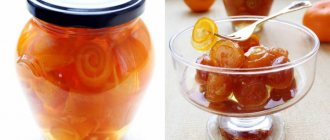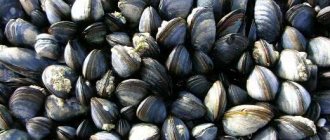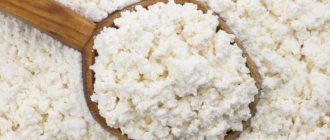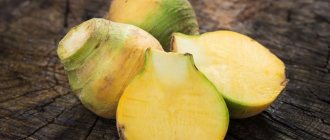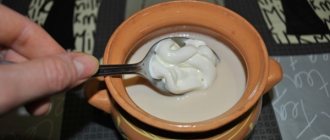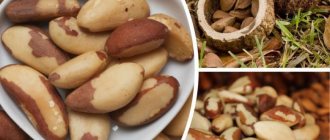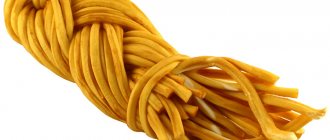Properties of hummus paste
Nutritional value and composition | Vitamins | Minerals
How much does hummus paste cost (average price for 1 kg)?
Moscow and Moscow region.
400 rub.
Hummus paste is usually called a snack based on chickpea puree, which may also contain olive oil, garlic, lemon juice, paprika, and tahini (sesame paste). Interestingly, in Hebrew and Arabic, the word hummus can mean both the snack itself and simply chickpeas. Hummus paste is especially popular in the countries of the Middle East, in particular in Israel, Jordan, Lebanon, Syria, Turkey and Cyprus.
Typically, hummus paste is made from boiled chickpeas, which are pureed by hand or using a blender, then olive oil, lemon juice and sesame paste are added. Certain seasonings are added to taste (for example, garlic, parsley, salt, onion, ground cumin, chili pepper, za'atar). Hummus contains an average of 300 kcal, but the nutritional value of this product may vary depending on the ingredients used.
Depending on the products added to the hummus paste, the finished dish acquires a variety of flavors. The most popular flavorings for hummus are roasted red peppers, roasted onions, garlic, roasted tomatoes, pine nuts, feta cheese, pumpkin puree and cocoa.
It is worth noting that there are also a great many ways to use hummus paste in cooking. For example, it is eaten with bread as a snack or spread on sandwiches. Due to the distinctive property of hummus, it harmonizes perfectly with meat and vegetable dishes; this paste perfectly sets off their aroma and taste.
Many Eastern restaurants will invariably offer you a salad or stew, placing it in the middle of the plate, with hummus spread around it. Kebabs, French fries, steaks, mushrooms or chips - hummus paste goes perfectly with all these products.
Making hummus
Homemade hummus recipe
To make hummus at home, you will need a household chopper (blender) and the following ingredients:
- olive oil (2-3 tbsp);
- lemon juice (4-7 tbsp);
- cumin (1/2 teaspoon);
- sesame seeds – 75-80 grams;
- lamb peas (chickpeas) – 250-300 grams.
The chickpeas must first be soaked for a period of 10 to 12 hours, after which the water should be changed and simmered over low heat for 1.5-2 hours. The degree of readiness is determined directly by the peas, which should be easily mashed with your fingers. Zira is fried on the surface of a dry frying pan without adding oil for several minutes. If there is no sesame paste, sesame seeds are fried in the same way. The further algorithm for preparing hummus looks something like this:
- Roasted cumin and sesame seeds are ground in a coffee grinder, after which it is necessary to cool them to room temperature.
- Sesame and cumin powder are mixed with peeled garlic cloves and olive oil, then salt is added (to taste).
- The resulting mass is crushed until smooth, and then mixed with boiled lamb peas.
- Next, as the ingredients turn into a puree with a homogeneous consistency, you need to slowly add water or broth (broth left after cooking chickpeas).
Lemon juice and paprika are added at the final stage of preparing the chickpea appetizer, which is placed in a bowl or other suitable container and decorated with finely chopped herbs (optional). Olive oil can be replaced with sesame oil; there is an old Jewish recipe in which a chickpea snack is prepared exclusively using directly pressed sesame seed oil.
We recommend reading: Sesame oil: benefits and harms, how to take
Chickpea hummus
There are recipes for hummus made from beans, lentils or regular peas with the addition of celery, oregano, mushrooms, tomato paste, turmeric, fresh cucumbers, lime and chili pepper. The classic Jewish version of preparing the snack involves the use of chickpeas, cumin (cumin), lemon juice, garlic and herbs. It is allowed to add finely ground pine nuts and coriander. A pea snack differs from a chickpea snack by having a lower protein content and the ability to provoke flatulence.
We recommend reading: Turmeric: health benefits and harm, medicinal properties, applications
Is it possible to freeze hummus?
If too much of the snack has been prepared, it can be frozen. However, such a procedure negatively affects the taste of hummus. To preserve the aroma and taste of chickpea paste as much as possible, it is recommended to drizzle it with a little olive oil before freezing and place it in an airtight plastic container, leaving some room in it. It is worth considering the fact that chickpea puree and sesame paste increase in volume as a result of freezing, so it is impossible to tightly fill the container to the top.
Hummus can be stored in an airtight container for up to six months. It is best to defrost the snack by placing it in the refrigerator for a day.
The benefits of hummus
The benefits of hummus are due to its composition, namely the unique combination of its ingredients. In addition, this pasta has absolutely no cholesterol. In terms of protein composition, chickpeas are very close to animal proteins with a high content of unsaturated fatty acids, vitamins and fiber.
Hummus paste is very nutritious, it is easy to get enough of it, but at the same time this dish is considered an extremely healthy food. The benefits of hummus are especially important for vegetarians, since it contains a lot of vegetable protein and iron, which helps maintain the necessary balance of substances in the body.
It is recommended to start any meal with hummus, because this way you can easily avoid overeating - a large amount of fiber gives you a feeling of fullness quite quickly. For those who adhere to different diets, the option of preparing hummus paste without using tahini is suitable - this way the dish will be low in calories, but will not lose its valuable properties.
Nutritional value of hummus, benefits and harms of a delicious product
Chickpea oil, which is part of hummus, contains a large amount of proteins, fats, fiber, calcium, magnesium, potassium, vitamins A, C, group B. Young sesame seeds (tahini) contain a lot of calcium, zinc, phosphorus and vitamin E. Calorie content 100 g of hummus - 300 kcal, energy value: proteins -9.6 g, carbohydrates -21 g, fats -19.7 g. Hummus saturates the body with vegetable protein, normalizes metabolism, lowers blood sugar levels, improves brain function, eliminates removes toxins from the body, improves the functions of the cardiovascular system, and has a positive effect on the nervous system.
Olive oil has a positive effect on the heart and normalizes cholesterol levels in the blood. Lemon and garlic are known sources of antioxidants. They improve the functioning of the immune system and are an excellent prevention of viral and colds. The dietary fiber contained in hummus forms a gel-like substance in the gastrointestinal tract, which binds bile with cholesterol and removes them from the body. Insoluble fiber prevents digestive disorders and constipation.
Hummus is very nutritious and easy to fill up on. The dish is considered healthy food. It is recommended to start your meal with hummus to avoid overeating. The increased amount of fiber quickly makes you feel full. The dish is especially useful for vegetarians, as it contains a lot of vegetable protein and iron.
However, hummus can be harmful to the body, in particular, the dish causes flatulence. It is not recommended to use the product in large quantities for people who are prone to obesity and people with individual intolerance to its components.
To prepare hummus you will need: 450 g of chickpeas (1 can), a quarter cup of liquid from a can, 3-5 tbsp. l. lemon juice, 0.5-1 tbsp. l. tahini (sesame), 2 cloves of garlic, 2 tbsp. l. olive oil, 0.5 tsp. salt. Open the can of chickpeas and drain the liquid. Combine the ingredients in a blender, add the chickpea liquid and blend again on low speed. Place the mixture in a bowl and make a well in the center. Pour olive oil into this cavity, you can add parsley. If desired, you can add finely chopped or grated chili pepper. Serve the dish immediately after cooking. Hummus is delicious with warm pita bread. You can make sandwiches with regular bread. This appetizer can be served with meat and vegetable dishes.
Store hummus in the refrigerator for 3 days. The snack can be stored in the freezer for a month. If it is a little dry, add olive oil. The taste of hummus can be varied. To do this, add fried red peppers, onions, tomatoes, as well as feta cheese, pine nuts, cocoa, and pumpkin puree to the appetizer.
Compound
Translated from Hebrew and Arabic, the word hummus refers to both a snack made from chickpeas and nochut (lamb peas) itself. Chickpea protein has excellent digestibility, and its structure is very close to animal protein, which makes it a complete alternative to fatty meat foods rich in cholesterol. In addition, the traditional oriental snack called hummus includes the following ingredients:
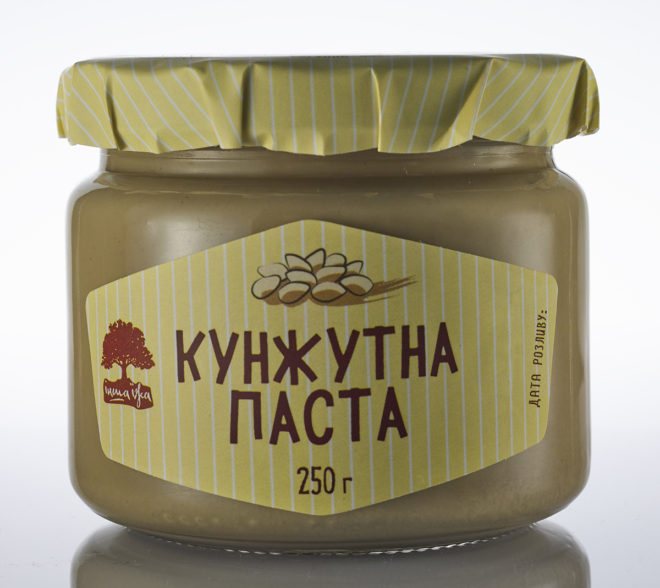
- Sesame paste (tahini). The paste-like mass of ground sesame seeds is distinguished by the highest content of calcium, potassium, magnesium and phosphorus. Omega-3 fatty acids prevent age-related changes and significantly increase the elasticity of the skin.
- Olive oil normalizes digestive function and stabilizes stomach acidity. For many hundreds of years, olive oil has been used to treat gastrointestinal diseases and nervous disorders.
- Garlic lowers cholesterol levels and has pronounced antibacterial properties, inhibiting the activity of diphtheria bacilli, staphylococci and yeast fungi.
- Lemon juice contains an impressive amount of fluoride, manganese, copper, magnesium, calcium and vitamins. Helps improve memory, concentration and enhance the body's natural defenses.
Paprika has a stimulating effect on the liver and pancreas, relieves flatulence, cramps and stomach cramps. Sesame is high in calcium, and its oil is a storehouse of valuable fatty acids.
Calorie content of hummus KBJU
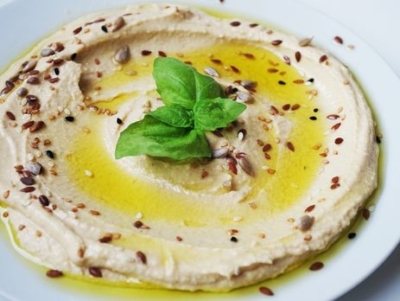
Calorie content (per 100 grams) – 220-260 Kcal.
Squirrels – 9%.
Fats – 14-17%.
Carbohydrates – 16-18%.
Hummus perfectly satisfies the appetite, but does not have a harmful effect on the body and does not harm the figure. The high calorie content of the dish is achieved due to the olive oil it contains, but it has enormous nutritional value for the body.
Vegetarians can also safely eat this dish.
Chickpeas contain fiber , which perfectly saturates, while regulating blood sugar levels, which is important for diabetics and patients with hyperglycemia.
Find out what you eat hummus with here; and how to cook bulgur soup - here.
What is hummus?
Hummus is a traditional Arabic snack made from chickpea puree with sesame paste, olive oil, lemon juice and garlic. Inventive housewives add herbs and spices to the composition. In combination, all these ingredients give a spicy, but not intrusive taste: ideal for pickles or with crispy pita bread.
The name humus is translated from Arabic predictably as “chickpeas” or “chickpeas”. It is this that is included in the base of the paste, which has already become a favorite of many. It is believed that hummus is a national Jewish dish. Israel annually imports more than 5 thousand tons of chickpeas, and there are thousands of hummus shops throughout the country - there are almost more of them than coffee shops.
However, not everything is so simple. The Syrians claim that chickpeas were invented in their region. And they refer to the first mentions of hummus in trade books of the 13th century. In Syrian cuisine, the recipe for the snack is still passed down from generation to generation.
The harm of hummus
You are unlikely to find much information about the dangers of hummus. Paste can cause problems with health and well-being only in the following cases:
- The high calorie content of hummus per 100 grams means that you should not overeat it. If you abuse the product, you can upset your stomach, causing diarrhea, constipation, flatulence, pain and heaviness in the stomach;
- consuming snacks in large quantities leads to gaining extra pounds;
- If you don't react well to legumes, hummus won't suit you (the main dish is chickpea puree).
Chickpea snacks
are found very rarely on our tables, unlike in the countries of the Middle East and the Mediterranean, where chickpea puree is a favorite delicacy. But once you learn about all the benefits of hummus, be sure to include this dish in your diet and delight your friends and family.
The benefits and harms of chickpeas, the properties and calorie content of chickpeas. Healthy Meal Recipes
Chickpea is an eastern “resident”, its age is several thousand years. It is known that it was part of dishes that were consumed by the Egyptian pharaohs. And doctors already at that time knew well the benefits of chickpeas, and described its healing qualities in their treatises.
How to know that we have chickpeas, variations of the name
The overseas bean is round in shape, the size of one pea is 0.5-1.5 cm in diameter. The seeds are rough to the touch, and the color of the peas can be deep yellow or dark.
Chickpeas will seem familiar to many; their “appearance” is similar to ordinary peas, but has its own characteristics. Who is this mysterious stranger from the legume family? It has many names: shish, bubbler, nahat. But most often it is called Turkish (or lamb) peas.
How many calories are in lamb pea dishes?
To assess the nutritional value of Turkish peas, it is enough to get acquainted with its composition. 100 g of product contains up to 9.8 g of protein, fat - 1.9 g. Beans are distinguished by a large amount of carbohydrates - at least 18.3 g. If you cook chickpeas, the calorie content of a 100 g serving will be 128.8 kcal.
Some chickpea varieties are especially rich in protein (up to 30 g per 100 g of product). This composition makes this plant-based product an excellent low-calorie alternative to meat.
Nakhat also contains another very useful component for the human body - calcium, and it also contains many minerals (from 2 to 5%) and vitamins - A, C, B1, B2, B3, B6, PP.
Are chickpeas really that healthy and who should include them in their diet? According to doctors, foreign beans are an excellent way to naturally cleanse the body and improve health. So what are the characteristics of chickpeas? Useful properties of bladderwrack:
- prevents the development of obesity;
- Helps the body resist colds and flu;
- helps reduce blood cholesterol levels;
- serves as a means of preventing the development of such a dangerous disease as cataracts;
- increases hemoglobin (therefore, pregnant women and nursing mothers should definitely eat chickpea dishes).
And that's not all! Peas from Turkey are known to be used in the fight against dental problems. Peas can calm an attack of arrhythmia and protect against heart pathologies.
Chickpeas play the role of a useful additive to medicines in the treatment of diseases of the liver and spleen. Eating lamb peas will help normalize intestinal function and make you forget about constipation. For those who suffer from depression and want to improve brain function, chickpeas will also help. Representatives of the fair sex will also appreciate the beneficial properties of these beans if they regularly consume this exotic vegetable: chickpeas help preserve youth for a long time.
Before you add a culinary novelty to your menu brought from the East, you need to learn not only about the benefits of chickpeas, but also about the harm this product can cause. Cons of eating yellow beans:
- increased formation of gases in the intestines;
- stomach spasm. It can occur if you wash down a chickpea dish with water;
- allergic reaction. Like any product, chickpeas may not be suitable for some people in terms of composition and properties.
Chickpeas do not go well with fruits containing pectin. Consuming these foods at the same time may cause stomach discomfort.
And finally, for those who suffer from thrombophlebitis, cystitis, bladder ulcers, gout and inflammation of the gastrointestinal tract, it is better to refrain from consuming this product.
What do nutritionists say?
Chickpeas can be used as a component of diets for various purposes. Since it contains iron, it is suitable for the diet of pregnant women. The ability of lamb peas to reduce the calorie content of dishes without depriving them of nutritional value is actively used to lose weight.
Peas from the fields of Turkey also replenish the diet for those who are forced to control their sugar levels. It gradually fills the body with energy, without the risk of increasing sugar levels. Chickpeas are also included in the diet indicated for skin diseases.
Don't forget that chickpeas are not only healthy, but also tasty. It is prepared in different ways. For example, in just 10 minutes you can prepare an unusually tasty dish - a salad of boiled chickpeas with the addition of tomatoes. For such a culinary masterpiece you will need:
Ingredients:
- 200 g boiled chickpeas;
- 3 tomatoes;
- 1 onion;
- 2 eggs.
Preparation:
- Mix boiled chickpeas with tomatoes, cut into small cubes.
- Add chopped onion.
- Boil the eggs, cut them and add them to the rest of the ingredients.
- Prepare salad dressing from 2 tbsp. l. olive oil, 1 tbsp. l. wine vinegar and a small amount of salt.
- Decorate the dish with herbs.
If you're not afraid to experiment in the kitchen, try making a more complex dish that includes chickpeas. Recipes for delicious shisha pastes can be borrowed from Arab cuisine. Here's one of them.
Ingredients:
- chickpeas – 450 g;
- garlic, herbs, spices, lemon juice - to taste.
Preparation:
- Soak the chickpeas in cold water and leave for 12 hours.
- Pour a new portion of water over the peas and cook for at least 2 hours, removing the foam with a spoon.
- When the chickpeas are ready, drain the water and sprinkle the peas with lemon juice.
- Add chopped garlic (to taste), herbs, spices; salt generously.
- Stir all ingredients and then grind in a blender.
To give the pate a specific taste, try to find sesame seed paste - tahini - in the store. If you were unable to obtain such a component, you can make a paste yourself using walnuts: they are roasted and beaten with olive oil. Tahini should be added to the pate and grind everything until fluffy.
Rules for selecting and storing chickpeas
High-quality chickpeas are whole, dry, smooth peas that are free of stains or mechanical damage. A bag made of natural linen is most suitable for storing beans. To preserve nakhat for a long time, it should be kept in a dry, dark, well-ventilated place where there are no strong odors.
Chickpeas have managed to win the hearts of many connoisseurs of exquisite tastes and fans of healthy eating. It provides amazing taste and health benefits.
How to store hummus
If you buy a ready-made product, the manufacturer will definitely indicate how long you can store a jar of already opened hummus. On average, this period ranges from 3 to 7 days.
How long does hummus last in the refrigerator if you make it yourself? The shelf life of this hummus will be 7 days, but if you store it in a glass container with a tightly closed lid?
Can hummus be frozen? If you took the initiative and prepared hummus for future use, then you can put it in the freezer for a whole month with a clear conscience!
I bought hummus. What do you eat it with?
Alkhasovs
About how to eat hummus.
Hummus is indispensable for breakfast. All over the world, mothers and wives face the same problems. One of them: what to feed the children and husband for breakfast, so that it is quick and tasty? In the morning, the foods consumed should be light and certainly nutritious, otherwise your child or husband (which in some cases is the same thing :)) will feel hungry by eleven o'clock in the afternoon. The high nutritional value of Hummus with pronounced beneficial properties has made this product popular among wives and mothers in solving this problem. Hummus goes well with fresh bread. In principle, you can experiment and serve Hummus with pita bread, crackers or chips, depending on the tastes of your loved ones.
Hummus will decorate your table for lunch and dinner. It goes well with fresh and canned vegetables and meat dishes, emphasizing and highlighting their taste and aroma. Ideal for kebabs and steaks. HUMMUS acquires a special taste if you spread it in an even layer in a plate, and place stewed or fried meat and mushrooms in the middle. recipes with hummus - [link blocked by decision of the project administration]
Hummus is, roughly speaking, pea paste with lemon juice and vegetable oil.
Yes, they just spread it on bread, and that’s it. Goes great with morning coffee and a slice of cheese. It’s also good with different types of bread, and with unleavened crackers. A sandwich with hummus and olives goes well with beer.
By the way, open hummus should be eaten within a couple of days, otherwise it will turn sour.
I came across this product by chance in OK. Round flat plastic jar, the kind they sell Korean salads in, 200 g, about eighty rubles. Not cheap, of course. It’s not that I haven’t tried it before, but I’ve never even seen it on sale, although I’ve been living here for a long time. But this name, hummus, stirred something in my soul. Perhaps, at the level of genetic memory, from the Tatar-Mongols. I wouldn’t have risked buying it if it weren’t for the woman standing next to me, also holding the same jar in her hands: “This is a paste made from chickpeas. My daughter eats it.” I knew what chickpeas were because I watched TV. Although I haven't tried it. In short, I took a risk and bought it. On the package: “Chickpea paste “Jerusalem Hummus.” Ingredients: chickpeas, refined deodorized sunflower oil, olive oil, water, sesame seeds, salt, garlic, red pepper, thyme, cumin, citric acid E 330, preservatives E 202, E 211.” Well, further about proteins, fats, nutritional value, etc. Chickpeas are a type of Asian pea. A yellowish-gray mass with the consistency of a soft pate. I went online looking for information on how and what to eat this product with, and found it. They eat it (or him?) with fish, meat, and dip bread (flatbread) in hummus. I tried spreading it on bread, on homemade jellied meat, as a snack. The taste did not make an impression. Pale and expressionless. A slight sourness adds some piquancy, but nothing more. Food is like food. I don't understand the excitement. To tell the truth, simple peas have a much brighter taste. I tried it and calmed down. Another legend has been debunked.
Hummus
rich in vitamins and minerals such as: vitamin B9 - 12%, vitamin K - 19%, potassium - 12.5%, magnesium - 18.8%, phosphorus - 22.6%, iron - 14.1%, manganese - 57.8%, copper - 37.7%, zinc - 12%
- Vitamin B9
as a coenzyme is involved in the metabolism of nucleic acids and amino acids. Folate deficiency leads to disruption of the synthesis of nucleic acids and proteins, resulting in inhibition of cell growth and division, especially in rapidly proliferating tissues: bone marrow, intestinal epithelium, etc. Insufficient folate intake during pregnancy is one of the causes of prematurity, malnutrition, and congenital deformities and child development disorders. A strong relationship has been shown between folate and homocysteine levels and the risk of cardiovascular disease. - Vitamin K
regulates blood clotting. A lack of vitamin K leads to an increase in blood clotting time and a decreased level of prothrombin in the blood. - Potassium
is the main intracellular ion that takes part in the regulation of water, acid and electrolyte balance, and is involved in the processes of conducting nerve impulses and regulating blood pressure. - Magnesium
is involved in energy metabolism, the synthesis of proteins, nucleic acids, has a stabilizing effect on membranes, and is necessary to maintain the homeostasis of calcium, potassium and sodium. A lack of magnesium leads to hypomagnesemia, an increased risk of developing hypertension and heart disease. - Phosphorus
takes part in many physiological processes, including energy metabolism, regulates acid-base balance, is part of phospholipids, nucleotides and nucleic acids, and is necessary for the mineralization of bones and teeth. Deficiency leads to anorexia, anemia, and rickets. - Iron
is part of proteins with various functions, including enzymes. Participates in the transport of electrons and oxygen, ensures the occurrence of redox reactions and activation of peroxidation. Insufficient consumption leads to hypochromic anemia, myoglobin deficiency atony of skeletal muscles, increased fatigue, myocardiopathy, and atrophic gastritis. - Manganese
is involved in the formation of bone and connective tissue, and is part of enzymes involved in the metabolism of amino acids, carbohydrates, and catecholamines; necessary for the synthesis of cholesterol and nucleotides. Insufficient consumption is accompanied by slower growth, disturbances in the reproductive system, increased fragility of bone tissue, and disturbances in carbohydrate and lipid metabolism. - Copper
is part of enzymes that have redox activity and are involved in the metabolism of iron, stimulates the absorption of proteins and carbohydrates. Participates in the processes of providing oxygen to the tissues of the human body. Deficiency is manifested by disturbances in the formation of the cardiovascular system and skeleton, and the development of connective tissue dysplasia. - Zinc
is part of more than 300 enzymes and is involved in the processes of synthesis and breakdown of carbohydrates, proteins, fats, nucleic acids and in the regulation of the expression of a number of genes. Insufficient consumption leads to anemia, secondary immunodeficiency, liver cirrhosis, sexual dysfunction, and the presence of fetal malformations. Research in recent years has revealed the ability of high doses of zinc to disrupt the absorption of copper and thereby contribute to the development of anemia.
more hide
You can see the complete directory of the most useful products in the application
Hummus paste is a snack made from chickpea puree, which may include garlic, lemon juice, olive oil, sesame paste, and paprika.
The total calorie content of hummus per 100 grams is 300 kcal. 100 g of product contains:
- proteins – 9.5 g;
- fat – 19.9 g;
- carbohydrates – 22 g.
The vitamin composition of hummus is represented by choline, vitamins B1, B2, B5, B6, B9, PP, C, E, K. The paste is enriched with zinc, selenium, copper, manganese, phosphorus, iron, magnesium, sodium, potassium, calcium.
